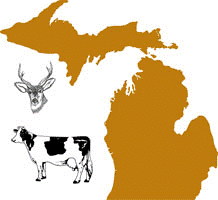Wildlife Disease and Zoonotics
Date of this Version
2005
Abstract
The spread of wildlife diseases is a major threat to livestock, human health, resource-based recreation, and biodiversity conservation (Cleaveland, Laurenson, and Taylor). The development of economically sound wildlife disease-management strategies requires an understanding of the links between ecological functions (e.g., disease transmission and wildlife dispersal) and economic choices, and the associated tradeoffs. Spatial linkages are particularly relevant. Yet while ecologists have long-argued that space is important (Hudson et al.), prior economic work has largely ignored spatial issues.
For instance, Horan and Wolf analyzed a case study of bovine tuberculosis (bTB) in Michigan deer, a problem where the disease appears to be confined to a single, spatially confined, wildlife population—an island. But wildlife disease matters generally are not spatially confined. Barlow, in analyzing bTB in possums in New Zealand, accounted for immigration of susceptible possums into a disease reservoir. However, he modeled immigration as fixed and unaffected by management. Bicknell, Wilen, and Howitt, also focusing on possums in New Zealand, developed a model that incorporates simple density-dependent net migration. This allowed the authors to account for endogenous immigration when deriving optimal culling strategies.



Comments
Published in Review of Agricultural Economics—Volume 27, Number 3—Pages 483–490.